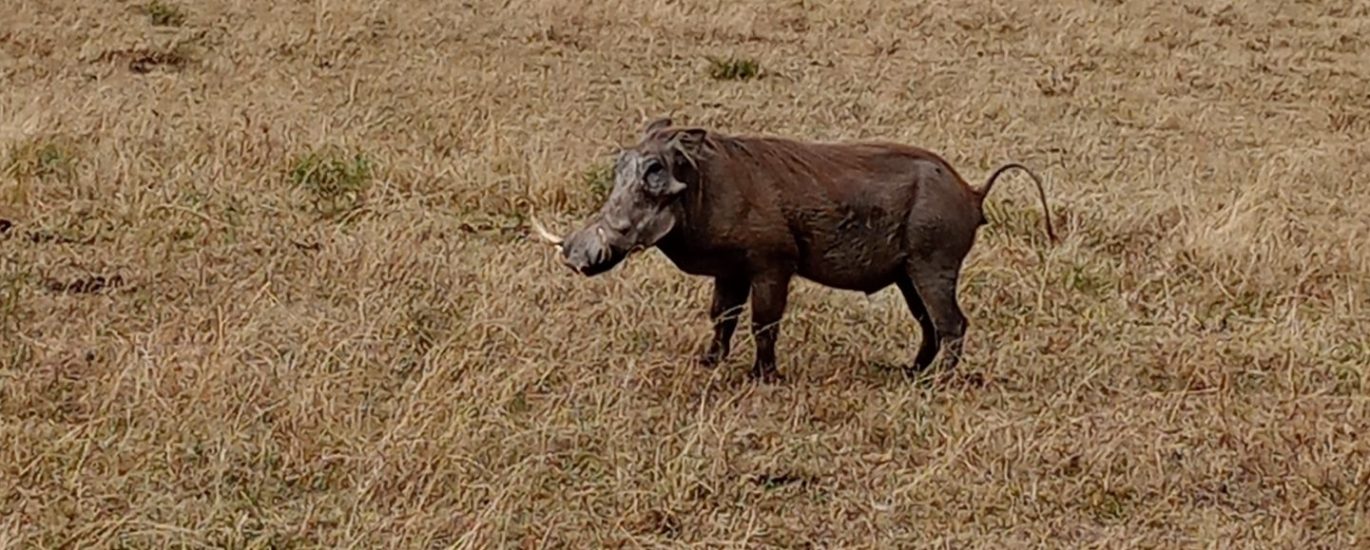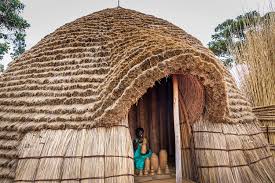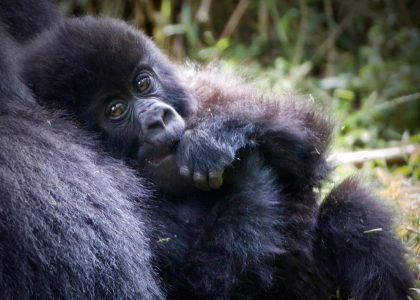Welcome to the third article in our Wazimba Travel Rwanda series! If you thought Rwanda was just about mountain gorillas, prepare to have your mind completely blown. This tiny country packs more wildlife diversity into its borders than seems physically possible, and we’re about to take you on a journey through experiences that will make you rethink everything you know about African wildlife.
Here’s what most people don’t realize about Rwanda: while everyone comes for the gorillas (and they absolutely should), the country offers some of Africa’s most incredible comeback stories, unique wildlife experiences, and pristine ecosystems that exist nowhere else on the continent. As your local tour operator, we’ve watched visitors arrive focused solely on gorillas and leave completely amazed by Rwanda’s other natural wonders.
Akagera’s Miraculous Comeback: The Big Five Return Home
Let’s start with what might be Africa’s most inspiring conservation success story—Akagera National Park. This isn’t just about wildlife viewing; this is about witnessing conservation in action, watching an entire ecosystem come back from the brink.
The Backstory: After the 1994 genocide, Akagera National Park was devastated. Returning refugees settled in the park, wildlife populations crashed, and the Big Five were reduced to just buffalo and leopards. Most experts thought Akagera was finished as a wildlife destination.
The Incredible Turnaround: In 2010, the Rwandan government partnered with African Parks to manage Akagera, and what happened next is nothing short of miraculous. Lions were reintroduced from South Africa in 2015. Black rhinos returned in 2017 after being absent for over a decade. Elephant populations have tripled. The transformation is so complete it’s almost hard to believe.
The Current Reality: Today, Akagera hosts all of the Big Five and offers some of East Africa’s most authentic game viewing experiences. Because visitor numbers are still relatively low, you’ll often have incredible wildlife sightings completely to yourself.
The Big Five Experience
Lions: The reintroduced lions have not just survived—they’ve thrived. From the original 7 lions brought from South Africa, the population has grown to over 40 individuals. Watching these magnificent cats patrol the savannahs of Akagera, knowing their incredible journey back home, makes every sighting deeply meaningful.
Black Rhinos: In 2017, 18 eastern black rhinos were translocated from South Africa to Akagera, marking their return to Rwanda after more than a decade. These critically endangered giants now roam the park’s northern plains, and spotting one feels like witnessing history.
Elephants: Akagera’s elephant population has grown from fewer than 50 individuals to over 120. These gentle giants have learned the park’s boundaries and seasonal patterns, creating incredible viewing opportunities, especially around the park’s lakes and rivers.
Buffalo: The park’s buffalo herds are spectacular, often numbering in the hundreds. During the dry season, massive herds gather around water sources, creating scenes that rival anything in East Africa.
Leopards: The most elusive of the Big Five, Akagera’s leopards are thriving but challenging to spot. When you do encounter one, the pristine wilderness setting makes the experience absolutely magical.
Akagera’s Unique Ecosystem
What makes Akagera special isn’t just the Big Five—it’s the incredible diversity of landscapes and ecosystems packed into this relatively small park.
Savannah Plains: The northern section of Akagera offers classic African savannah with acacia woodlands, open grasslands, and scattered kopjes (rocky outcrops). The game viewing here rivals anywhere in East Africa.
Lake System: Akagera is unique in Rwanda for its chain of lakes and wetlands. Lake Ihema and other water bodies support massive hippo populations, enormous crocodiles, and incredible bird life.
Montane Forest: The western edge of the park transitions into montane forest, creating habitat for different species and spectacular scenery.
The Wildlife Variety: Beyond the Big Five, Akagera hosts zebras, giraffes, topis, roan antelopes, elands, waterbucks, and over 490 bird species. The diversity is staggering for such a compact area.
Nyungwe Forest: Ancient Mysteries and Canopy Adventures
If Akagera represents Rwanda’s conservation future, Nyungwe Forest showcases its ancient past. This is one of Africa’s oldest rainforests, a pristine wilderness that feels absolutely primeval.
Ancient Forest Magic: Nyungwe is estimated to be over 1 million years old, making it one of the continent’s most ancient forests. Walking through Nyungwe feels like stepping back in time—massive trees draped in epiphytes, mysterious mists that roll through the canopy, and sounds of primates echoing through the forest.
The Canopy Walk: Nyungwe’s suspended canopy walkway is absolutely spectacular. This 160-meter suspension bridge hangs 70 meters above the forest floor, offering views over an unbroken canopy that stretches to the horizon. It’s the only canopy walk in East Africa, and the experience is both thrilling and serene.
Nyungwe’s Primate Paradise
While everyone knows about mountain gorillas, Nyungwe hosts 13 primate species, making it one of Africa’s most important primate conservation areas.
Chimpanzees: Nyungwe’s chimps are habituated for tourism, offering incredible encounters with our closest relatives. The forest setting is more pristine than most chimp trekking destinations, and the experience feels completely wild.
Angola Colobus: Nyungwe hosts some of the world’s largest troops of Angola colobus monkeys—we’re talking about groups of 300+ individuals moving through the forest canopy like a living carpet of black and white fur.
L’Hoest’s Monkeys: These beautiful primates are endemic to the Albertine Rift and found in significant numbers in Nyungwe. Their distinctive white beards and gentle nature make them favorites among primate enthusiasts.
Other Primate Species: The forest also hosts blue monkeys, red-tailed monkeys, vervet monkeys, olive baboons, and several nocturnal species including bushbabies and pottos.
Nyungwe’s Natural Wonders
Waterfall Heaven: Nyungwe contains some of Rwanda’s most spectacular waterfalls. The trail to Isumo Waterfall offers incredible forest walks through pristine wilderness, ending at a dramatic cascade that feels completely untouched.
Source of the Nile: One of Nyungwe’s most significant features is that it contains the watershed divide between the Nile and Congo river systems. Several springs in the forest are considered among the sources of the Nile River.
Botanical Diversity: With over 1,000 plant species, including 140 orchid species, Nyungwe is a botanist’s paradise. The forest contains plants found nowhere else on Earth, making every walk a potential scientific discovery.
Lake Kivu: Freshwater Paradise
Rwanda’s western border is defined by Lake Kivu, one of Africa’s Great Lakes and absolutely one of its most beautiful. This massive freshwater lake offers experiences completely different from Rwanda’s other attractions.
Crystal Clear Waters: Unlike many African lakes, Kivu’s waters are crystal clear and safe for swimming. The lake sits at high altitude, giving it a temperate climate that’s perfect year-round.
Island Adventures: Lake Kivu contains numerous islands, each with its own character and attractions. Napoleon Island and Amahoro Island offer pristine beaches, while Peace Island provides excellent bird watching and stunning sunset views.
Water Sports Paradise: The lake’s calm, clear waters are perfect for kayaking, canoeing, stand-up paddleboarding, and swimming. The scenery—rolling hills reflected in crystal-clear water—makes every water activity absolutely magical.
Lakeside Towns: The towns of Gisenyi, Kibuye, and Cyangugu offer different perspectives on lake life. Gisenyi’s sandy beaches feel almost Mediterranean, while Kibuye’s dramatic hills and islands create some of Rwanda’s most photogenic landscapes.
Hot Springs: Several hot springs around Lake Kivu offer natural spa experiences. The combination of volcanic activity and pristine lake waters creates unique geological features worth exploring.
Rwanda’s Incredible Bird Life
With over 700 bird species recorded in a country smaller than Belgium, Rwanda offers some of Africa’s best birding opportunities. The country sits at the intersection of different biogeographical zones, creating incredible diversity.
Endemic and Near-Endemic Species: Rwanda hosts several Albertine Rift endemic species found nowhere else on Earth. The Rwenzori turaco, red-collared mountain babbler, and Grauer’s warbler are just a few of the special species that make Rwanda a birding hotspot.
Nyungwe’s Forest Birds: The ancient forest hosts species like the great blue turaco, whose calls echo through the canopy, and numerous sunbird species that flash like jewels through the understory.
Akagera’s Water Birds: The park’s lakes and wetlands support massive populations of waterbirds. Fish eagles, pelicans, herons, ibises, and numerous duck species create incredible birding opportunities.
Volcanoes National Park Specialties: The high-altitude environment hosts unique species like the scarlet-tufted malachite sunbird and Rwenzori batis that are found nowhere else in Rwanda.
Wazimba Travel Birding Tip: Rwanda works perfectly for combination trips—you can see incredible birds while gorilla trekking, game driving, and forest walking. The diversity means serious birders and casual observers both find plenty to enjoy.
Conservation Success Stories Across Rwanda
What makes Rwanda’s wildlife story so compelling isn’t just the diversity—it’s the incredible conservation success happening across all ecosystems.
Community Conservation: Throughout Rwanda, local communities are active partners in conservation. Revenue from tourism directly benefits villages around national parks, creating incentives for wildlife protection.
Habitat Restoration: Major reforestation efforts are connecting fragmented habitats and creating wildlife corridors. The government’s goal is to increase forest cover to 30% of the country’s land area.
Anti-Poaching Success: Rwanda’s wildlife crime rates are among the lowest in Africa. Professional ranger forces, community involvement, and harsh penalties for wildlife crimes have virtually eliminated poaching.
Research and Monitoring: All of Rwanda’s parks have active research programs monitoring wildlife populations and ecosystem health. Visitors often encounter researchers, adding scientific context to wildlife viewing.
Unique Wildlife Experiences You Won’t Find Elsewhere
Night Walks in Nyungwe: Guided night walks in Nyungwe offer chances to see nocturnal primates, forest elephants, and incredible insect life. The forest at night is absolutely magical—full of sounds, movements, and bioluminescent fungi.
Boat Safaris on Lake Ihema: Akagera’s boat safaris offer incredible wildlife viewing from a completely different perspective. Hippos, crocodiles, and water birds are easily observed, while elephants and other game come to drink at the water’s edge.
Butterfly Watching: Rwanda hosts over 100 butterfly species, including several endemics. The diversity and beauty of Rwanda’s butterflies create opportunities for specialized photography and nature observation.
Geological Wonders: Rwanda’s volcanic landscape creates unique geological features—lava tubes, crater lakes, hot springs, and mineral deposits that tell the story of East Africa’s geological formation.
Seasonal Wildlife Patterns
Understanding Rwanda’s seasons helps maximize wildlife experiences across different ecosystems:
Dry Seasons (June-August & December-February):
- Best wildlife viewing in Akagera as animals concentrate around water
- Clearer skies for mountain photography in Volcanoes National Park
- Excellent conditions for canopy walks in Nyungwe
- Peak tourist season with higher accommodation prices
Wet Seasons (March-May & September-November):
- Lush landscapes perfect for photography
- Excellent birding with migrant species present
- Baby animals born during these periods
- Fewer tourists and better rates
Year-Round Advantages: Rwanda’s equatorial location and high altitude mean wildlife viewing and outdoor activities are excellent throughout the year.
Combining Wildlife Experiences
One of Rwanda’s greatest strengths is how easily different wildlife experiences combine:
The Complete Rwanda Experience: Mountain gorillas + Akagera Big Five + Nyungwe primates and canopy walk = the ultimate Rwanda wildlife adventure
The Primate Specialist Tour: Mountain gorillas + golden monkeys + Nyungwe chimpanzees and colobus monkeys = Africa’s best primate experience
The Conservation Story Tour: Akagera’s comeback story + mountain gorilla conservation + community conservation projects = understanding conservation in action
The Adventure Combo: Gorilla trekking + canopy walk + volcano climbing + lake activities = adventure and wildlife combined
Photography in Rwanda’s Diverse Ecosystems
Rwanda’s varied landscapes require different photographic approaches, but the country offers some of Africa’s best wildlife photography opportunities:
Forest Photography: Nyungwe and Volcanoes National Parks require different techniques than open savannah. Dappled light, mist, and dense vegetation create challenging but incredibly rewarding conditions.
Savannah Wildlife: Akagera offers classic African photography opportunities with excellent light and diverse subjects.
Lake and Mountain Landscapes: Rwanda’s combination of pristine lakes and volcanic peaks creates landscape photography opportunities that are simply stunning.
Primate Photography: From mountain gorillas to tiny bushbabies, Rwanda offers primate photography opportunities that are unmatched anywhere in Africa.
Planning Your Rwanda Wildlife Adventure
Park Selection Strategy:
- First-time visitors: Combine gorillas with Akagera for maximum diversity
- Serious wildlife enthusiasts: All three major parks plus Lake Kivu
- Limited time: Volcanoes National Park for gorillas plus one other destination
- Photography focus: Plan based on your primary interests—primates, big game, or landscapes
Seasonal Considerations: Each park has optimal seasons, but Rwanda’s year-round accessibility means you can visit anytime and find excellent wildlife viewing.
Physical Preparation: Different experiences require different fitness levels. Gorilla trekking can be demanding, while Akagera game drives are accessible to everyone.
The Wazimba Wildlife Experience
As your local tour operator, we specialize in creating wildlife experiences that showcase Rwanda’s full diversity:
Expert Guide Network: Our guides are specialists in different ecosystems—primate experts for forest parks, big game specialists for Akagera, and birding guides who know every species.
Flexible Itineraries: We adjust based on wildlife movements, weather conditions, and your specific interests to maximize your chances of incredible encounters.
Conservation Education: We provide context about Rwanda’s conservation successes and challenges, making your wildlife viewing more meaningful and impactful.
Seamless Logistics: From park permits to transportation between diverse ecosystems, we handle all details so you can focus on the incredible wildlife.
Ready for Rwanda’s Wildlife Surprises?
Rwanda’s wildlife diversity extends far beyond mountain gorillas, offering experiences that consistently surprise and inspire visitors. From the Big Five comeback in Akagera to ancient primates in Nyungwe’s primeval forests, from crystal-clear lake adventures to high-altitude volcano ecosystems, Rwanda delivers wildlife encounters that are both unique and deeply meaningful.
In our fourth article, we’ll explore Rwanda’s rich cultural heritage and remarkable modern renaissance—from genocide memorials that tell stories of resilience to traditional dances that celebrate life, from ancient kingdoms to cutting-edge innovation.
Ready to discover Rwanda’s incredible wildlife diversity beyond the famous gorillas? Contact the Wazimba Travel team to start planning your comprehensive Rwanda wildlife adventure. We’ll create an itinerary that showcases the full spectrum of natural wonders in the Land of a Thousand Hills—from mountain gorillas to Big Five safaris, from ancient forests to pristine lakes.




